From Allspice to Za’atar: Spice Organization Tips & Tricks (+ Printable Labels)
Be honest: If I were to look in your spice drawer/rack/cabinet right now, what would I find?
Stale poppy seeds from the last millennium? A jar of dusty old dried thyme that smells like, well, nothing? A little tin of szechuan peppercorns you bought to make some weird recipe in college and have yet to crack open since?
Sounds like you are due for a spice makeover.
Contrary to popular belief, dried herbs and spices do not have an indefinite shelf life. They may not grow mold, but every year that goes by, more flavor goes with it. Especially if those spices are stored in direct light or in a warm place (so that glass spice spinner sitting next to your oven? Probably not the best place for them).
I personally store my spices in a set of drawers in our kitchen hutch. It serves to keep the spices out of the light and away from heat, and even though it’s on the other side of the room, is still fairly accessible when I need it.
I make it sound like I’ve got my ish together when it comes to spices, but let me tell you, the previous state of our spice drawer was pretty sad.
As a result of some prior partnerships with more than one spice company who basically sent us a jar of every spice they make, we found ourselves awash with expired spices, far more than could fit in the two drawers on our hutch (they were overflowing into our pantry as well). Many were obscure spices or seasoning blends that had never even been opened. Also, the mismatched labels and jars from multiple brands bothered me (type-A, much?)
I figured, when better than the New Year to start fresh with a fresh set of spices and new, more aesthetically pleasing spice jars and custom labels (be sure to click through to download a printable file for your enjoyment!)
Spice Storage Tips:
- Store dried herbs and spices in a cool, dry place away from direct light. A drawer or cabinet for example. If you have to have your spices out on the counter, use an opaque container like a metal tin.
- Always store spices in airtight containers. If using your own containers, always label them (you may think you can tell ancho from chipotle on sight/smell alone, but I’d err on the site of caution anyway).
- Stored properly, whole spices (like cloves or nutmeg) can keep up to 4 years. Ground spices generally last for 2-3, and dried herbs like basil and parsley should be replaced every year or so for maximum freshness and flavor.
- When in doubt, give it a good sniff. If the scent isn’t strong and fragrant, it’s probably time to replace it. Your food will thank you!
- Jarred spices you buy in grocery stores can often be a year or two old already. Buying bulk spices ensures you get the freshest flavor possible. Trust me, one sniff of fresh ground ginger and you can really smell the difference!
- When buying bulk spices, jot the purchase date on the bottom of your jar using a dry erase marker or chalk pen (or write in on a sticker or piece of masking tape). That way you always know precisely how old something is.
- Always use a clean dry spoon to measure out spices, and avoid sprinkling directly over a steaming pot (steam can cause spices to clump and lose their freshness more quickly).
The before. Not too bad, but when you start looking at the expiration dates… well… yikes.
To get started on my spice refresh, I dumped out the drawers and discarded any spice that was over a year expired, jotting down any spice I knew I used regularly and wanted to replace. I saved any spice that was still good and was something I knew I would actually use, if it wasn’t, it got tossed (chances are if you haven’t cracked the seal on that dusty old jar of marjoram, you probably won’t do so anytime soon). Same for duplicates, I kept the newer/better jar and tossed the rest.
Expired/useless spices got dumped into compost, the jars rinsed and sent off for recycling. Sure, I probably could have reused the jars, but they weren’t quite right for my drawer and I didn’t want to spend the better part of a day scrubbing off labels.
I picked up some short glass jars in 2, 4 and 6 ounce sizes, the shorter proportion fitting perfectly into the shallow drawers of our hutch. You can find similar jars on Amazon (2oz/4oz) or SKS Bottle (both sources also have standard spice jars as well!)
I chose to get different sizes of jars so that I could buy just what I needed. I’ll easily go through a big jar of cinnamon (or two) per year. But cream of tartar? Ground cloves? Do you really need a whole 4 ounces if you’re just using a pinch here and a pinch there? Probably not.
Buying spices in bulk allows you to get just what you need, from 1 ounce to 8 or even more (hello red pepper flakes, my love). So I could get just a tiny bit of that obscure spice you only need for that one recipe, without having to commit to a full jar of it. I got my spices from World Spice, who carries a huge assortment of high quality bulk spices that you can order in bulk (as little as 1 oz) without jars. Penzey’s is another popular option, though you can’t get super small amounts online without buying jars as well.
When ordering spices online, remember the difference between weight and volume! For example, 1 ounce of dried basil will easily fill an 8 ounce jar, whereas 1 ounce of chili powder takes up barely 1/4 of the same space. Another reason I like World Spice is that their “small jar refill” option gives you just enough spice to perfectly fill a standard sized spice jar (about 4 ounces by volume).
Once my fresh spices arrived, filling the mailroom with the fragrance of ginger and cardamom (sorry neighbors), I went about filling my jars.
I hadn’t yet designed my labels, so I temporarily labeled the jars with washi tape and dry erase markers (above left, my ‘in process’ photo). This labeling system proved less than practical as the designs made the names of the spices very hard to read. You know how they say you should live in a house for a while before you remodel it? Same thing here, I guess. Knowing what the shortcomings of my new organization system were helped me better design a label that would solve those issues.
Mainly this: we look for visual cues to help us find what we’re looking for. For example, your eyes will dart to the jars of green leafy things first if you need the dried basil, glancing over the brown and red powders. But when you find yourself looking down at the solid tops of jars, you can’t see the colors or textures of the spices themselves, making it surprisingly hard to quickly find what you need. Even if those jars are nicely labeled, if all the labels look the same, there is no instant visual cue to aid your search.
To remedy this issue, I set about creating a set of labels that would make it easy to instantly find exactly the spice you need, even if you’ve fallen off the alphabetization wagon and the drawer doesn’t have any semblance of order to it.
My solution was these labels: with large pastel letters backing the full name of the spice. The big letters let your eyes quickly scan the drawer and zero in on just the spice you were looking for. I color coded them as well, with blue for spices, green for herbs, and red for mixes and blends.
(Also, did you know that there are more C spices than any other letter? The Cs practically take up an entire page just by themselves!)
As usual, why spend time designing a set of labels like this just to keep them to myself?
The label set includes 60 spice labels, based on my own spice collection. They’re designed to fit these 1.75″ round labels (I like the Weatherproof Matte material), but you can also print onto solid sticker paper and cut out the circles yourself. If you’ve got standard tall spice jars, you can use these on the sides of the jars instead (since they’re a bit too big for the lids). I recommend printing a test sheet first on regular paper, then checking for alignment before printing on your labels. Be sure you are printing at 100% scale and haven’t adjusted the position of the image at all.
I’m also taking requests: leave a comment below with a spice that’s missing from this set, and when I have 20 requests I’ll add a new download with the updated files!
We are a participant in the Amazon Services LLC Associates Program, an affiliate advertising program designed to provide a means for us to earn fees by linking to Amazon.com and affiliated sites.

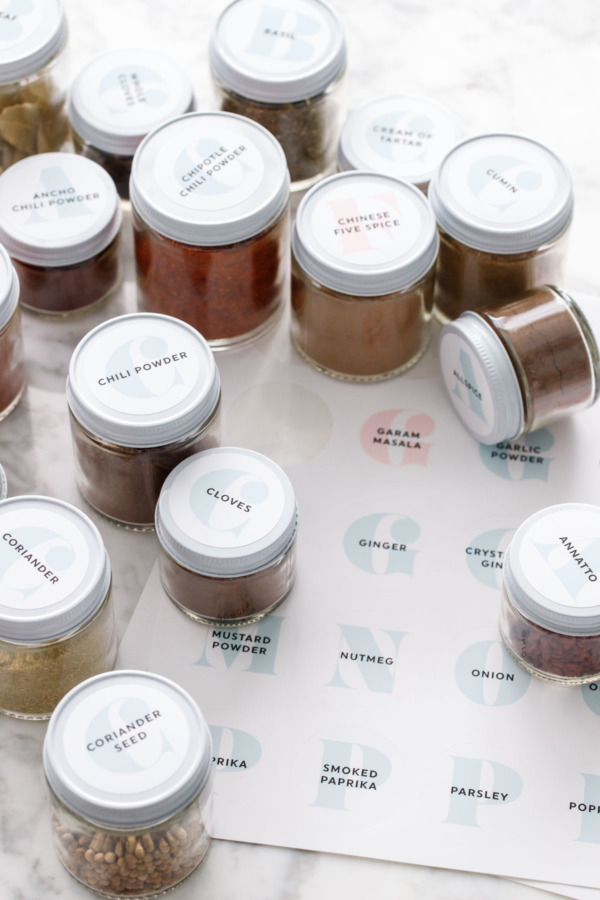
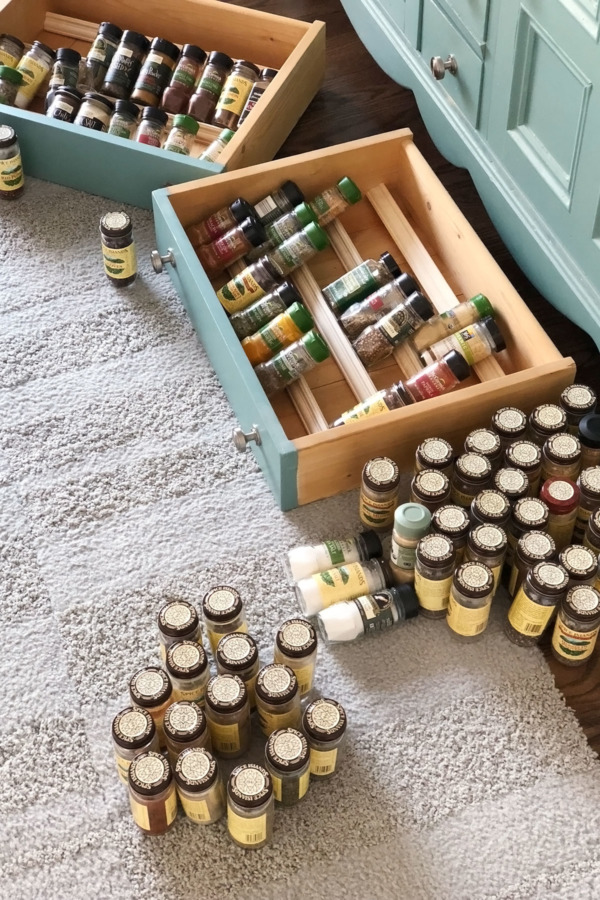
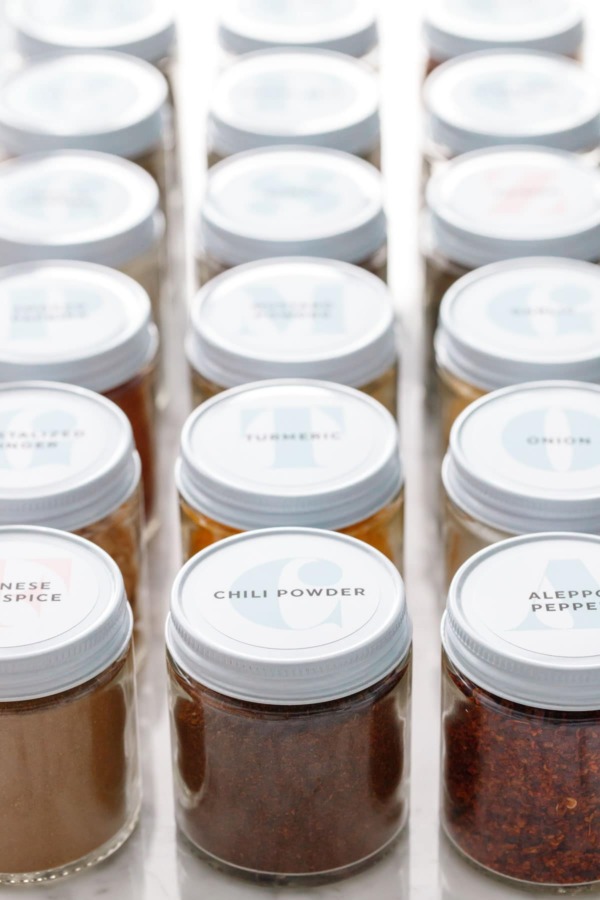
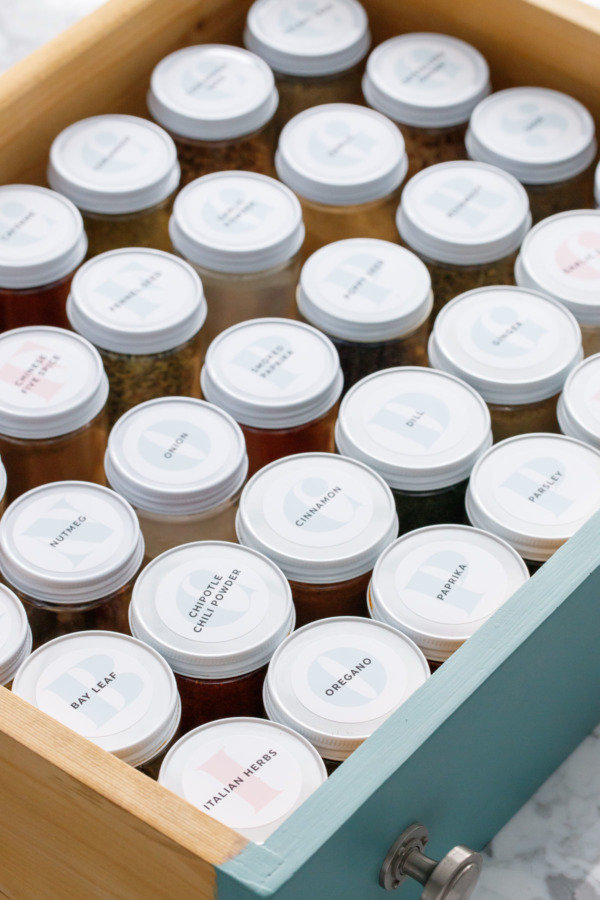
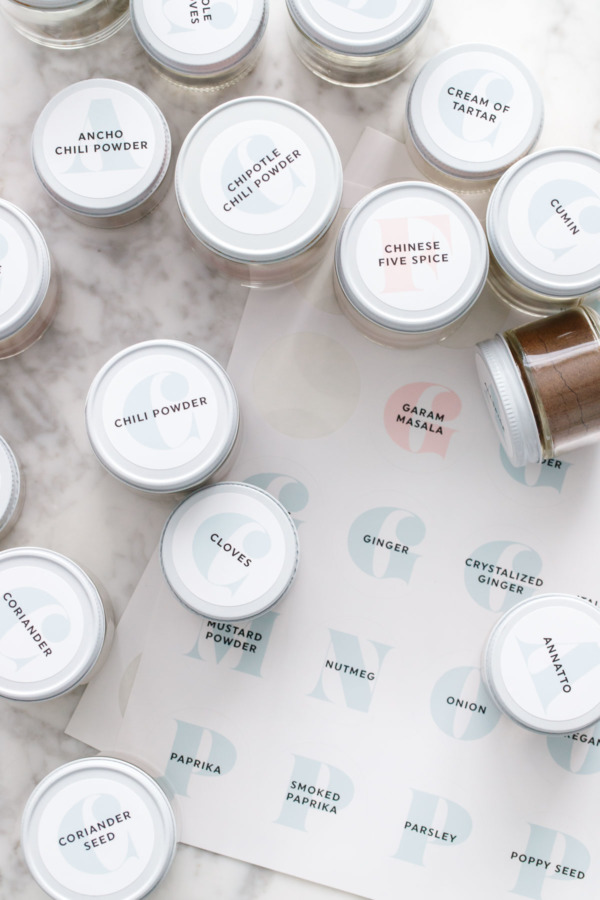
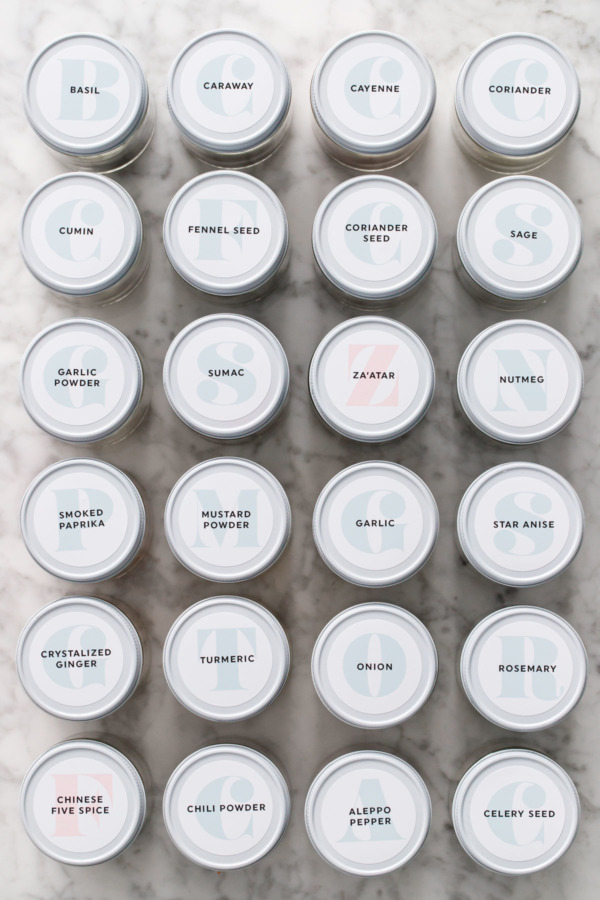
0 comments